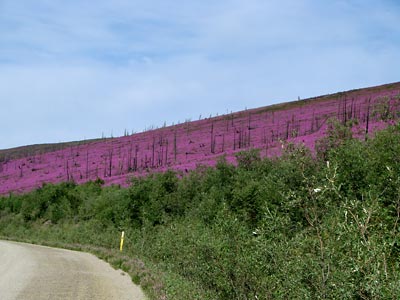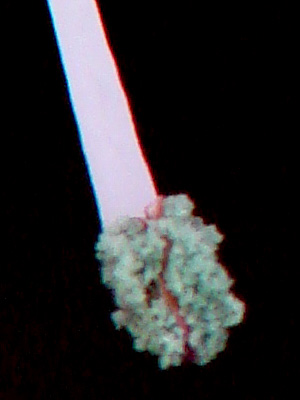 |
 |
 |

2. Mid-May. Sprouting stem.
|

3. Late May. A cluster of stems, probably
arising from a single rhizome.
|

4. Late June. A section of stem with
buds in various stages.
|
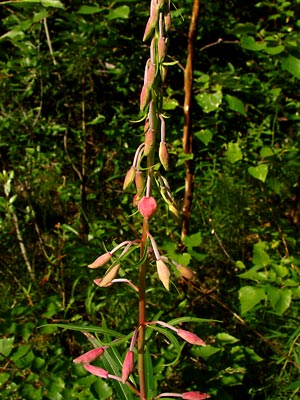
5. Late June. A section of stem with buds.
The lowest buds on the stem will bloom
first.
|

6. Late June. The entire stem.
|
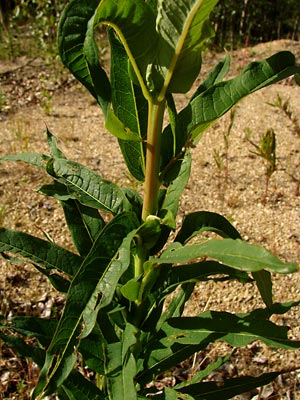
7. Late June. The leafy lower section of
another stem.
|
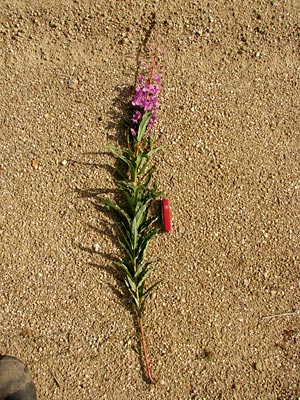
8. Late June. An entire stem with a knife to
show size.
|
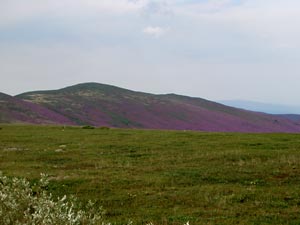
9. Early July. A distant view of a burned
hillside.
|
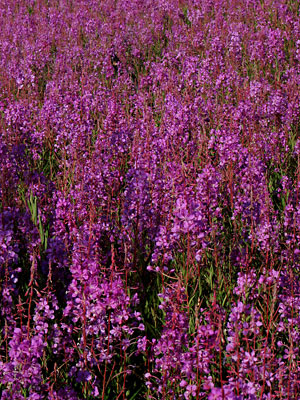
10. Early July. Close view of a blooming
field of fireweed.
|
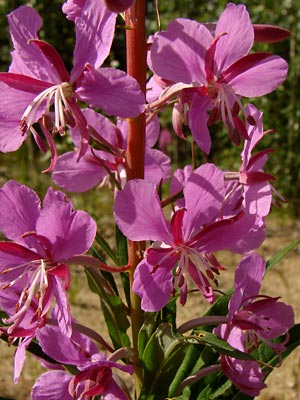
11. Late June. Close-up of the lower
blossoms on the stem in photo 6.
|

12. Late June. Blossoms which are
faintly pink. Note the red stems.
|
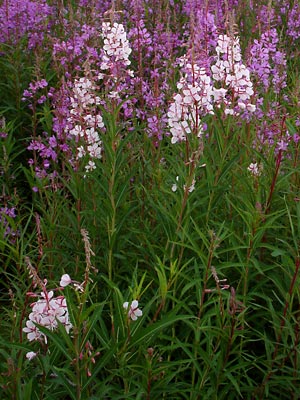
13. Late June. A mix of stems with magenta
and white blossoms. All of the stems are red
in the region of the blossoms.
|
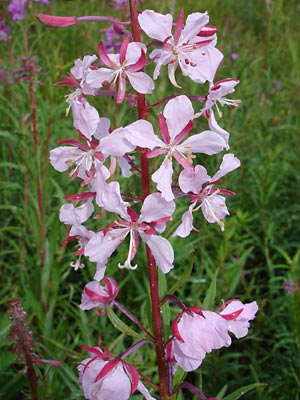
14. Late June. Close-up view of white
blossoms on a red stem.
|
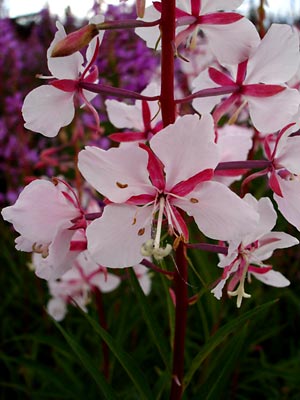
15. Late June. Close-up view of white
blossoms with a faint trace of pink.on
a red stem.
|

16. Late June. A group of green stems
with white blossoms, probably from a
single rhizome.
|
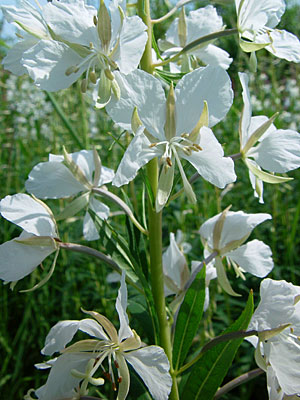
17. Early July. Close-up of white blossoms
on a green stem.
|

18. Early August. A branched stem with red
blossoms. The stem branches are red in the
region of the blossoms.
|
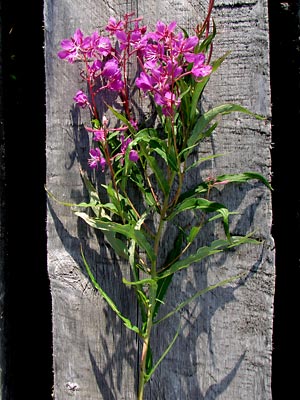
19. Early August. Close-up of a branched stem.
This stem and the stem in photo 18 grew
through the gaps in the deck shown above.
|

20. Early July. A stem growing horizontally
beside a creek which has cut deeply
into permafrost.
|
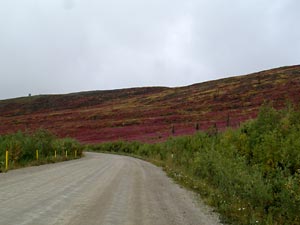
21. Mid-August. A fire-ravaged hillside
with a field of fireweed which has finished
blooming.
|

22. Mid-August. Closer view of the
field in photo 21. Most of the plants have
already dispersed their seeds.
|

23. Mid-August. A single stem which
arose late in the year. This was the only
stem within 10 feet.
|
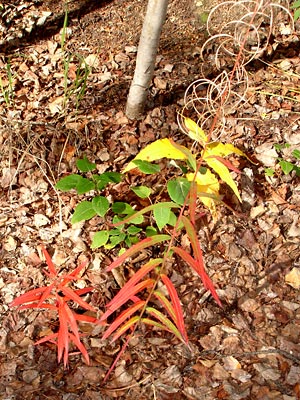
24. Late August. Two stems from the same
area shown in photo 23, but taken the
following year. The stem on
the right has bloomed and dispersed its seeds
while the stem on the left has only
recently arisen.
|

25. Early August. Several stems with
fully developed seed pods. Notice that
the buds at the tops of the stems failed
to bloom.
|

26. Mid-August. A cluster of stems.
This is quite unusual, the previous year's
dead growth is still present and the leaves
extend into the flowering region of the
stems.
|
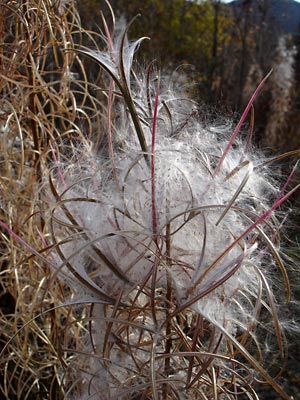
27. Late September. Seed dispersal. Red
color of the seed pods is maintained
until the pod splits.
|

28. Late September. Remains of split seed
pods after seed dispersal.
|

29. Early October. Stem with some intact pods
and others which have just split.
|
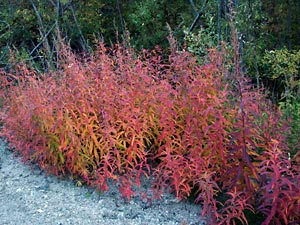
30. Late August. A group of stems, some
of which have bloomed and produced pods.
|
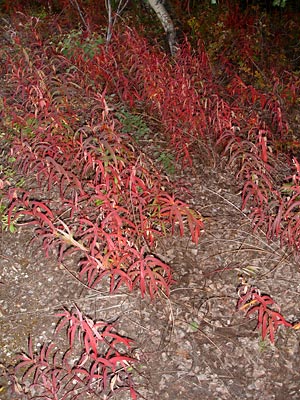
31. Another group of stems. Most have
not bloomed.
|

32. A group of stems whose color has faded.
|
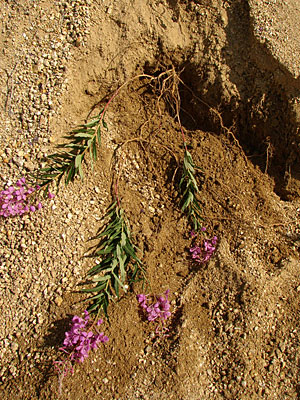
33. Early July. A group of stems from a
single rhizome.
|
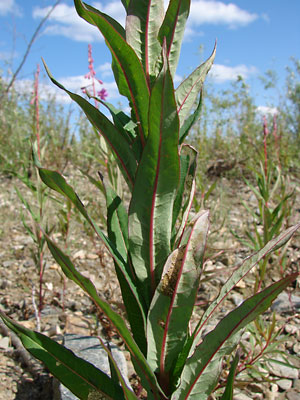
34. June 25, 2009. Leaves on the mid-section of
a stem. Note the red mid-vein vs the mid-vein
in photo 7.
|

35. June 25, 2009. Several buds on a section
of a stem. All but the upper bud have begun
to swell prior to opening.
|
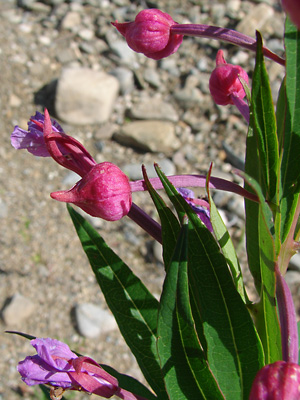
36. June 25, 2009. Several buds, some are
beginning to open
|

37. July 22, 2009. This expanding clonal
colony of albino fireweed has been in this.
area since 1984
|
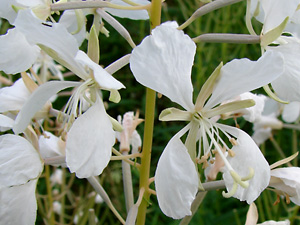
38. July 22, 2009. Several blossoms
from the colony in photo 37.
|

39. July 28, 2009. Close view of several
blossoms.
|

40. July 28, 2009. Close-up of a single blossom.
|

